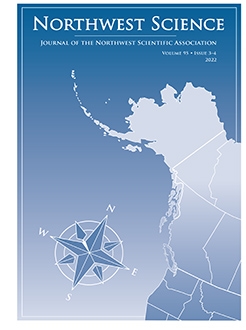Increasingly large high-severity wildfires in dry forests of the western United States have led to concern about how best to regenerate new forests after wildfires. Harvesting fire-killed trees, burning woody debris, and tree planting are commonly used reforestation strategies. This study evaluated the effects of a novel forest restoration approach that involved masticating un-merchantable dead trees and spreading the woody debris generated across the site to prevent erosion from the 2007 Angora Fire in Lake Tahoe, California. Woody material covered 82% of the site after treatment, with an average depth of 6.6 cm, and volume of 190 tonnes per hectare. We found that this treatment reduced shrub regrowth, compared to an untreated area nearby, and that shrub regrowth was inversely related to fuel depth. Seven years after the fire, shrub cover averaged only 50% on treated plots compared to 92% on untreated plots. The tallest shrubs averaged 69 cm in height on the treated site compared to 114 cm on nearby untreated sites. Tree seedlings planted on the treated site averaged 141 cm in height, well above the height of the shrubs. Advantages of this approach include controlling erosion while reducing drought stress, reducing the potential for weed introduction, and reducing the need for herbicide to control shrub competition. Although leaving a layer of woody material where new trees have been planted does constitute a fire hazard, so too does a vigorous shrub layer. Managers should consider and weigh these factors when deciding on a post-fire reforestation strategy.
How to translate text using browser tools
28 September 2022
Effects of Post-Fire Timber Harvest and Mastication on Shrub Regrowth in the Sierra Nevada Mountains: A Lake Tahoe Case Study
Susan D. Kocher,
Daylin Wade
ACCESS THE FULL ARTICLE

Northwest Science
Vol. 95 • No. 3-4
Summer-Fall 2022
Vol. 95 • No. 3-4
Summer-Fall 2022
high-severity wildfire
post-fire management
reforestation
salvage logging
woody mulch




